Exposure Basics II
Exposure Basics II
by George Schaub
Now we come to how exposure and creative photography go hand in hand.
Why would you need to change the aperture or shutter speed under different lighting conditions? Why would you want to use a fast shutter speed for one shot and a slow one for another? Why change apertures or ISO?
That goes to the heart of the photographic exposure system and is one of the most important aspects of the craft. As we explore this further we’ll talk about “image effects.” These are ways in which you interpret the scene using the tools of the camera.
 |
|
|
Shutter Speed
Shutter speed allows you to choose how motion will be depicted. Using a fast shutter speed of 1/1000 sec (and a fast framing rate for making a number of shots) I was able to catch the scarf in midair as it was tossed by this street performer on the promenade in Old Quebec.
In terms of image effects, shutter speed determines how motion is depicted in a photograph. In terms of picture quality, it also has a profound influence on how steady the image appears, depending on the equipment you are using and how steadily you can hold the camera without a tripod or other supporting setup.
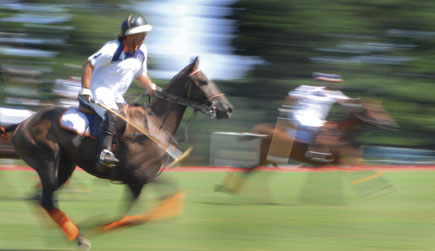 |
By using a slow shutter speed of 1⁄8 sec and “panning,” or following the motion of a subject across the field of action, I was able to depict the action of this polo match.
Though the lowest hand holdable shutter speed differs depending on how steady you are and the gear you have to balance, the borderline is generally at or below 1⁄30 sec (such as 1⁄15, 1⁄8 sec etc). This might change if you are using a vibration reduction or image-stabilization lens, in which case you might be able to get by with a 1⁄15 sec exposure.
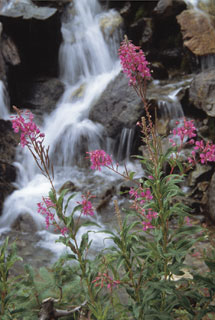 |
A 1⁄30 sec is “slow” because it is probably the slowest speed at which most people can hand hold a camera without the image showing some shake, or blur caused by photographer motion.
A slow shutter speed allows you to depict interesting time/motion image effects. This waterfall behind a small stand of flowers was photographed using a tripod with the camera set at a shutter speed of 1⁄8 sec.
Fast And Slow Image Effects
Given that you can steady the camera with a tripod, a slow shutter speed can also depict motion in ways the unaided eye cannot see. The flow of water, or the swift moves of an athlete, or moving traffic when photographed at a “slow speed” (below 1⁄30 sec) can take on an otherworldly look, in which the passage of time and motion through time are shown in ways hinted at by modern physics but rarely seen by the eye. Slow shutter speeds also come in very handy when shooting with flash, as it allows for techniques such as slow sync (more on slow sync later).
Fast shutter speeds, on the other hand, freeze motion in ways the eye cannot. Today’s digital cameras have framing rates at speed such as 1/8000 sec at up to eight fps. This splits time into fractions too small to ever be seen without a camera. It can show us a ball frozen in midair as it leaves the pitcher’s hand or a diver just as he or she cleaves the water.
This photo of Emma Polgrean showing her jump-roping form was made with an exposure of 1/1000 sec at f/5.6, a speed that guaranteed catching her in midair
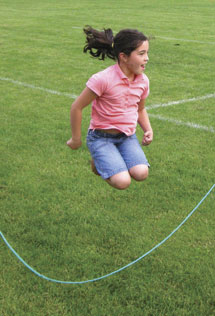 |
Of course, not every use of shutter speed need be as dramatic as described above. In general, we use shutter speed to ensure that we have a steady shot, and usually something in the range of 1/125 to 1/500 sec will do the job, except with very unsteady hands, very strong wind conditions or when hand holding very long, heavy lenses.
F/stop, Or Aperture Settings
Aperture refers to the diameter or the opening in the lens through which light travels when an exposure is made. It works with “stops” that are variable between the maximum (widest) and narrowest (minimum) opening the lens offers. The higher aperture numbers represent the narrower openings, as the numbers are actually fractions that are represented by terms such as f/16 or f/4; think of it as, for example, 1⁄4 being a larger value than 1⁄16, thus f/4 is a wider lens opening than f/16.
Aperture is a way to control light volume, but it also plays a critical part in the depiction of sharpness through the picture space, or the visual relationship of near-to-far subjects—what is known as depth of field. A narrower aperture, all other things being equal, such as the focal length of the lens and the distance between the camera and subject, will yield more sharpness throughout that space. A wider aperture will yield less of a range of sharpness from near to far.
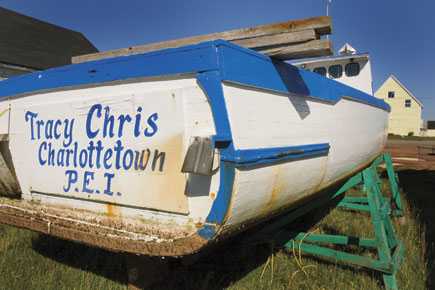 |
Wide angle lenses and narrow apertures combine to deliver a zone of sharpness, or “depth of field” that cannot be seen by the unaided eye. This boat and the distant building are both sharp due to use of a 24mm lens at f/22, with focus on the bow of the boat.
This ability to control sharpness, and the choices made in aperture settings, is one of the most creative aspects of photography. It has a profound effect on the image and how you depict subjects within the context of the overall scene, and can be applied critically by using the depth of field preview function on your D-SLR. It is a key image effect.
 |
As we explore various exposure scenarios we will continually apply aperture and shutter speed values to attain different image effects.
Shallow depth of field can be used to create visual attention on the foreground subject by having the background go “soft,” or drop off in sharpness. These plants would have been “lost” in the thickets of the background if a deep depth of field were used. Setting the lens at f/4 and focusing on the plants yielded this sharp/soft relationship, an effect enhanced further by using a telephoto lens.
You can play with depth of field even more by using special lenses, such as a PC (Perspective Control) lens or, as shown here, with an optical device such as a Lensbaby. The radical shift in the sharp/unsharp relationship can make for fun and interesting effects.
 |
 |
ISO, Or Light Sensitivity
The ISO number defines just how sensitive the sensor is to light. The degree of sensitivity any given “ISO” delivers is difficult to put your finger on, as it is a standard created by scientists and not something intuitive to the eye or mind. It is stated as a number, with ISO 100 being the lowest in most digital camera systems (ISO 200 in some Nikons). The term “ISO 100,” for example, means nothing onto itself, but in the context of the scene, brightness, aperture and shutter speed values it is a very key element in determining exposure and exposure values. It is part of an elegant, balanced system of exposure.
When the light gets low and the shutter speed gets slow it is a good idea to ensure a steady shot by
using a high ISO setting. One of the real advantages of digital is that you can change ISO on every frame. This twilight shot was made on the docks at ISO 1000.
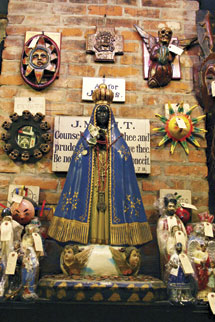 |
ISO poses part of an exposure solution to a given light level. For example, at ISO 100 on a bright day the correct exposure is usually around f/16 at 1/125 sec, or the so-called “sunny 16” rule. (This says that if your meter is broken and you have to set exposure yourself and it’s sunny out with the sun coming over your shoulder you can set the ISO at 100 and have a great exposure at f/16 at 1/125 sec—and it works!)
The sensitivity of the sensor is calibrated by your setting an ISO number. In round numbers, many cameras offer a range between ISO 100 and 1600, with some going up to ISO 3200 and beyond. Every time you double the speed, or ISO, you are in effect doubling the sensitivity of the sensor, or adding a “stop” of sensitivity to light. But this doubling of sensitivity only makes sense in the context of the aperture and shutter speed settings, which control the amount of light reaching the sensor.
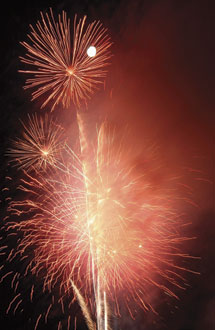 |
There are times when flash is not allowed or would ruin the character of the shot, and that’s when high ISO comes into play. This photo inside a New Orleans curio shop was made at ISO 2400 handheld.
So, if for any reason you need more or less light to affect how the aperture and shutter speed are set, you simply raise or lower the ISO setting in the camera. Go to a higher number for more light sensitivity (when you need a faster shutter speed or narrower aperture) or a lower ISO for less light sensitivity (when you want a wider aperture or slower shutter speed).
You might think all shots made in low light or after sunset require a high ISO, but that’s only if you shoot handheld. Mount the camera on a tripod and you can shoot at lower ISO settings, which generally yield much less “noise.” That’s the case with these low-light shots. The classic Las Vegas neon cowboy was photographed at ISO 200 and the fireworks at ISO 100, both on tripod, albeit with slow shutter speeds.
In general, you will usually need a higher ISO setting in low light and want a lower ISO setting in bright light. Why not just set the highest ISO for every shot? Another rule to keep in mind is: the lower the ISO setting the better the quality of the image, all else being equal. That’s because to get more light sensitivity a gain, or additional charge is applied across the sensor. As you go higher in ISO this gain adds more noise to the image.
- Log in or register to post comments












































